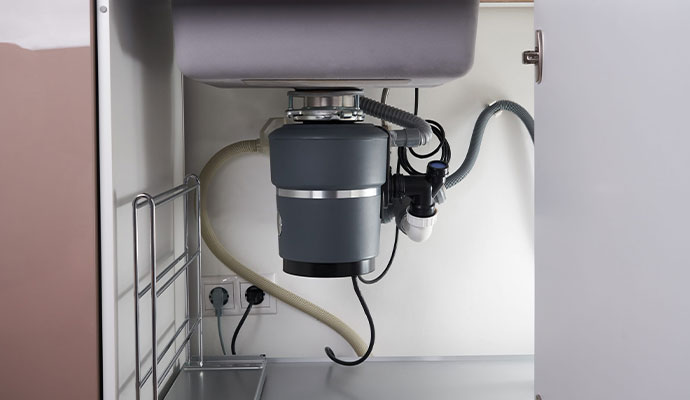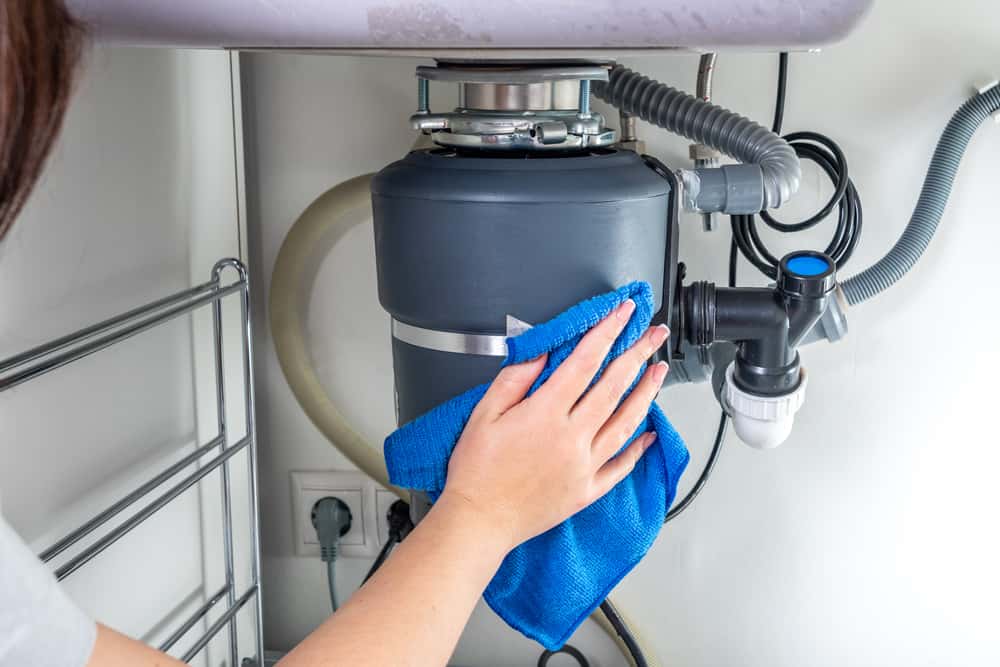Helpful Methods for Fixing a Dripping Garbage Disposal
Helpful Methods for Fixing a Dripping Garbage Disposal
Blog Article
The content in the next paragraphs on the subject of Garbage Disposal Leaking From Bottom is pretty much enjoyable. Check it out for your own benefit and see what you think of it.

Waste disposal unit are vital kitchen home appliances that aid in throwing away food waste efficiently. Nevertheless, a dripping garbage disposal can be a discouraging and unpleasant problem to take care of. Fortunately, numerous leakages can be fixed quickly with a couple of simple steps. In this write-up, we will talk about exactly how to fix a leaking garbage disposal effectively.
Introduction
Garbage disposals are installed under kitchen sinks and are designed to shred food waste into smaller pieces, permitting it to travel through the plumbing system conveniently. While these devices are normally trustworthy, leaks can occur gradually because of damage, loose connections, or damages to the device.
Typical Root Causes Of Leaks in Trash Disposals
Worn Seals and Gaskets
Seals and gaskets play an important duty in avoiding water from dripping out of the waste disposal unit. With time, these parts can degrade, causing leaks around the disposal unit.
Loose Links
The connections in between the waste disposal unit and the plumbing system can come to be loosened in time, causing water to leakage out throughout operation.
Splits or Openings in the Disposal System
Physical damage to the waste disposal unit, such as fractures or holes in the real estate, can likewise result in leakages.
Determining the Source of the Leakage
Before trying to deal with a leaking waste disposal unit, it is necessary to determine the source of the leak. This can commonly be done with visual examination or by carrying out easy examinations.
Visual Examination
Check the garbage disposal device thoroughly for any kind of indications of water leak. Pay attention to areas around seals, gaskets, and link factors.
Examining for Leakages
One method to examine for leaks is by running water via the disposal system and looking for any noticeable signs of leakage.
Devices and Materials Needed for Taking Care Of a Leaking Waste Disposal Unit
Before beginning the repair work procedure, collect the required devices and materials, consisting of a screwdriver, adjustable wrench, plumbing professional's putty, substitute seals or gaskets, and epoxy or patching material for fixing splits or holes.
Step-by-Step Guide to Repairing a Dripping Garbage Disposal
Shut off the Power
Prior to attempting any type of fixings, ensure that the power to the waste disposal unit device is turned off to stop the risk of electric shock.
Find the Leakage
Recognize the exact place of the leakage and determine the cause.
Tighten Links
Use a wrench to tighten any type of loosened links in between the disposal unit and the plumbing system.
Replace Seals or Gaskets
If the leakage results from used seals or gaskets, remove the old elements and change them with brand-new ones.
Patching Splits or Holes
For cracks or holes in the disposal system, usage epoxy or an ideal patching product to secure the broken area.
Checking the Waste Disposal Unit After Fixing
Once the repair is complete, evaluate the garbage disposal by running water with it to make sure that the leakage has actually been dealt with.
Preventive Maintenance Tips to Avoid Future Leaks
To avoid future leaks, it is necessary to carry out routine maintenance on your garbage disposal. This includes keeping it clean, preventing putting non-food products or difficult objects down the disposal, and periodically checking for leaks or various other concerns.
Verdict
Finally, fixing a dripping waste disposal unit is a reasonably uncomplicated procedure that can be completed with fundamental tools and materials. By adhering to the actions detailed in this write-up and exercising precautionary maintenance, you can keep your waste disposal unit in good working problem and prevent expensive repair work in the future.
HERE’S HOW TO FIX YOUR GARBAGE DISPOSAL
WHAT TO DO IF SOMETHING IS STUCK IN YOUR GARBAGE DISPOSAL
If the impeller won’t turn, there’s probably something stuck in the disposal. It could be a steak bone or peach pit, although plumbers report pulling all sorts of inappropriate objects out of disposals, such as bottle caps or aluminum foil. Make sure power to the disposal is off, and look inside to see if you can see the source of the jam.
Never stick your fingers in a disposal. Pull out anything you see with tongs or pliers.
If the disposal still won’t work, it may be time to call a plumber or consider buying a new disposal. GEM Plumbing & Heating is here for all of your garbage disposal needs.
WHAT TO DO IF YOUR GARBAGE DISPOSAL DRAIN IS CLOGGED
Take everything out from underneath your sink and put a bucket or other container under your disposal to catch any water that drains out. Disconnect your disposal from the power supply. If it’s plugged into a wall outlet, unplug it. If it’s hardwired into an electrical box, go to the electrical panel and turn off the breaker for the disposal. Pour ¼ cup of baking soda into the drain, followed by ½ cup of white vinegar. Give the solution a few minutes to fizz and do its work. Look into the disposal with a flashlight to see if you can see an object that might be causing the clog. If you see it, remove it using tongs or pliers. MORE TIPS ON DEALING WITH A CLOGGED GARBAGE DISPOSAL
Never use drain cleaner in a garbage disposal. It can damage the plastic parts inside the disposal. You can also be splashed with the caustic liquid while working to clear the clog. Beware! Never stick your fingers into a garbage disposal. Trust us — not a good idea. In many instances, your dishwasher drains through your garbage disposal. This allows the disposal to grind any large food particles that may be drained out of your dishwasher. There are some jurisdictions, however, where the plumbing code prohibits such a connection. WHAT TO DO WHEN YOUR DISHWASHER DRAINS THROUGH THE DISPOSAL
Run some water in the sink so your plunger has at least a ½-inch of water to create a seal and plunge vigorously up and down several times. You may need to repeat this several times. Run hot water down the drain to clear any residue that remains.

Do you appreciate reading about Why Is ? Write a short review down below. We'd be glad to hear your insights about this blog post. We hope to see you back again before long. Appreciated our blog posting? Please share it. Help someone else find it. Thank you so much for your time spent reading it.
Call Today Report this page